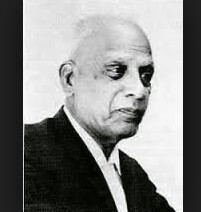Kalpathi Ramakrishna Ramanathan
| K. R. Ramanathan | |
|---|---|

| |
| Born |
Kalpathi Ramakrishna Ramanathan 28 February 1893 Kalpathi, Palakkad, Madras Presidency, British India |
| Died | 31 December 1984 (aged 91) |
| Nationality | Indian |
| Awards |
|
| Scientific career | |
| Fields | Physics and Meteorology |
| Doctoral advisor | C. V. Raman |
Diwan Bahadur Kalpathi Ramakrishna Ramanathan FNA, FASc, FIAS, Hon.FRMetS (28 February 1893 – 31 December 1984) was an Indian physicist and meteorologist. He was the first Director of Physical Research Laboratory, Ahmedabad. Ramanathan was awarded Padma Bhushan in 1965 and Padma Vibhushan in 1976..
Ramanathan was born in Kalpathi, Palakkad to Ramakrishna Sastrigal, an astrologer, printer and Sanskrit scholar. After completing secondary school, he entered the Government Victoria College, Palakkad in 1909. In 1911, he received a government scholarship to attend the Presidency College, Madras, where he studied for a B.A. (Hons.) degree in physics. He received his honours degree in 1914, and an M.A. two years later in 1916. After taking his M.A., the principal of the Maharaja’s College of Science in Thiruvananthapuram in Travancore (now the University College Thiruvananthapuram), who was one of his examiners, offered him the post of a demonstrator in physics. At the college, Ramanathan enjoyed the freedom to conduct his own investigations and to hone his laboratory skills. He travelled across the kingdom and developed the first rainfall map of Travancore; in conjunction with this study, he published his first research paper: "On Thunderstorms over Trivandrum." In late 1921, Ramanathan moved to Calcutta to collaborate with C. V. Raman, who had accepted him as a doctoral student, on studies of X-ray diffraction in liquids. For this work, in June 1922 he received the first-ever D.Sc. degree awarded by the University of Madras. He joined Rangoon University as Assistant Professor of Physics in late 1922. During the university holidays, he continued to carry out post-doctoral research under Raman's guidance, and in 1923 observed an unusual "fluorescence" in a beam of light when it was diffracted in water - which Raman eventually concluded was an effect caused by the substance, associated with a change in frequency equal to the molecular vibrational frequency.
...
Wikipedia
